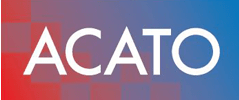Discover the Advantages of ISO 9001 in Regulatory Compliance

Enhancing Regulatory Compliance with ISO 9001: Benefits & Requirements
Introduction
ISO 9001 and regulatory compliance benefits drive organizations to adopt a structured quality management system that systematically meets legal obligations and enhances operational resilience. Failing to align processes with statutory requirements exposes businesses to fines, recalls, and reputational damage—ISO 9001 offers a proven framework to close those gaps. This article defines ISO 9001 and its compliance mechanism, explores core benefits for risk reduction and efficiency, examines industry-specific applications, outlines implementation steps, and highlights competitive advantages of certification.
What Is ISO 9001 and How Does It Support Regulatory Compliance?
ISO 9001 is an international standard for Quality Management Systems that requires organizations to document processes, apply risk-based thinking, and monitor performance—ensuring legal and regulatory requirements are identified, controlled, and continuously improved. By mandating process documentation and top-management review, it embeds compliance into everyday operations and reduces the chance of non-conformities.
ISO 9001 and Regulatory Compliance - Key Principles
ISO 9001 requires organizations to document processes, apply risk-based thinking, and monitor performance to ensure legal and regulatory requirements are met and continuously improved. This approach embeds compliance into everyday operations.
ASQ, ISO 9001:2015 – What is the 9001:2015 Standard?
This citation supports the article’s claim that ISO 9001 is an international standard for Quality Management Systems.
What Are the Core Principles of ISO 9001 Quality Management System?

The quality management system in ISO 9001 rests on seven principles that guide compliance and continual improvement:
- Customer focus drives legal conformance and regulatory reporting.
- Leadership ensures accountability for statutory obligations.
- Engagement of people promotes adherence to documented procedures.
- Process approach standardizes workflows against regulatory checklists.
- Improvement fosters corrective action for compliance gaps.
- Evidence-based decision-making uses audit data to meet legal thresholds.
- Relationship management aligns supplier controls with regulatory demands.
These principles create a cohesive system that naturally extends into all compliance practices.
How Does ISO 9001 Align with Legal and Regulatory Requirements?
ISO 9001 aligns with legal obligations by requiring organizations to maintain a register of applicable laws and standards, integrate them into operating procedures, and verify adherence through internal audits. This mechanism ensures that every regulatory requirement is traced, documented, and acted upon within the quality management system.
What Is the Role of Risk-Based Thinking in ISO 9001 Compliance?
Risk-based thinking in ISO 9001 compels organizations to proactively identify potential legal and regulatory threats, assess their impact, and implement preventive controls. By treating non-compliance as a risk to quality, businesses establish a culture of vigilance that supports consistent regulatory fulfillment.
What Are the Primary Benefits of ISO 9001 Certification for Regulatory Advantage?
ISO 9001 certification reduces legal exposure, enhances process reliability, and bolsters customer confidence by demonstrating documented compliance processes. Through an external audit, certification verifies that controls meet regulatory mandates and positions organizations to respond swiftly to legislative changes.
Benefits of ISO 9001 Certification for Risk Management
ISO 9001 certification encourages organizations to proactively identify and manage risks, helping to prevent potential issues before they arise. This proactive approach enhances reliability and reduces process disruptions.
British Assessment Bureau, Benefits of ISO 9001 Certification
This citation supports the article’s claim that ISO 9001 certification reduces legal exposure and enhances process reliability.
How Does ISO 9001 Reduce Legal and Compliance Risks?
Organizations reduce legal and compliance risks by:
- Maintaining a centralized compliance register that tracks statutory requirements.
- Implementing preventive and corrective actions to address non-conformities promptly.
- Ensuring full traceability of products and services through documented processes.
These measures lower the likelihood of penalties and strengthen regulatory resilience.
In What Ways Does ISO 9001 Improve Operational Efficiency for Compliance?
ISO 9001 improves compliance efficiency by:
- Standardizing workflows to eliminate redundant checks and streamline approvals.
- Leveraging performance metrics and key indicators to detect deviations early.
- Driving continual improvement cycles that optimize compliance processes over time.
Standardization and ongoing refinement minimize wasted effort and accelerate audit readiness.
How Does ISO 9001 Enhance Customer Trust Through Compliance?
Certification under ISO 9001 signals to customers and stakeholders that an organization consistently meets legal and regulatory expectations. This trust emerges from documented evidence of conformity, external validation by auditors, and a transparent commitment to quality and compliance.
How Does ISO 9001 Enable Industry-Specific Regulatory Compliance?
ISO 9001’s flexible framework integrates sector-specific requirements to ensure tailored compliance outcomes. By mapping industry regulations onto the core QMS structure, businesses achieve both generic quality aims and specialized legal conformance.
ISO 9001 and Industry-Specific Regulatory Compliance
ISO 9001’s flexible framework integrates sector-specific requirements to ensure tailored compliance outcomes. By mapping industry regulations onto the core QMS structure, businesses achieve both generic quality aims and specialized legal conformance.
VComply, Manufacturing Industry Compliance with ISO 9001
| Industry | Standard Alignment | Compliance Outcome |
|---|---|---|
| Medical Device | ISO 13485 integration | Streamlined CE marking and FDA approvals |
| Pharmaceutical | GMP alignment within QMS | Consistent batch quality and regulatory audit success |
| IT & Data Privacy | Control framework with ISO 27001 and GDPR | Secure data handling and privacy compliance |
This comparative overview shows how ISO 9001 bridges generic quality controls with sector-specific regulations and leads into detailed examples.
How Does ISO 9001 Support Medical Device Regulatory Compliance?
By integrating ISO 13485 requirements into its QMS, ISO 9001 guides device manufacturers through design controls, traceability records, and process validation—core elements of FDA and EU MDR conformity. This dual-standard approach enhances audit readiness and product safety.
What Role Does ISO 9001 Play in Pharmaceutical Compliance?
In pharmaceutical organizations, ISO 9001 reinforces Good Manufacturing Practice by embedding batch control, deviation management, and corrective action procedures into the QMS. This alignment supports health authority inspections and ensures consistent therapeutic quality.
How Does ISO 9001 Integrate with IT and Data Privacy Compliance?
ISO 9001 complements information security and data privacy mandates by sharing control objectives with ISO 27001 and addressing GDPR principles. Common requirements—such as document control, access management, and incident response—create a unified compliance ecosystem.
What Are the Key Steps to Implement and Maintain ISO 9001 for Regulatory Compliance?
Implementing ISO 9001 for compliance involves establishing a framework that identifies requirements, documents processes, trains personnel, and continuously monitors performance. Clear steps ensure both initial certification and long-term alignment with evolving regulations.
Steps to Implement and Maintain ISO 9001 for Regulatory Compliance
Implementing ISO 9001 for compliance involves establishing a framework that identifies requirements, documents processes, trains personnel, and continuously monitors performance. Clear steps ensure both initial certification and long-term alignment with evolving regulations.
Vertex AI Search, How to Get ISO 9001 Certified | 5-Step Guide
This citation supports the article’s claim that implementing ISO 9001 involves a framework that identifies requirements, documents processes, trains personnel, and continuously monitors performance.
What Is the ISO 9001 Compliance Framework?
- Define scope and identify applicable regulatory requirements.
- Assess risks and opportunities to prioritize compliance actions.
- Document processes, procedures, and work instructions.
- Train staff on QMS controls and regulatory obligations.
- Conduct internal audits to verify process effectiveness.
- Hold management reviews to evaluate compliance performance.
- Apply corrective and preventive actions to address audit findings.
These sequential steps build a robust QMS foundation that sustains legal conformity.
How Can Organizations Maintain Ongoing Regulatory Compliance with ISO 9001?
Organizations sustain compliance by establishing continual improvement cycles that include periodic audits, management reviews, calibration of performance metrics, and updates to the compliance register. This proactive approach ensures regulatory changes are rapidly integrated into the QMS.
What Does the ISO 9001 Certification Process Involve for Regulatory Audits?
The certification process comprises a gap analysis to identify control shortfalls, a stage-1 audit to review documentation, a stage-2 on-site audit to assess implemented controls, and regular surveillance audits. Successful certification confirms that processes meet both ISO 9001 and relevant regulatory requirements.
How Does ISO 9001 Certification Provide a Competitive Regulatory Advantage?
ISO 9001 certification demonstrates to regulators, customers, and partners that an organization maintains rigorous compliance controls, setting it apart in competitive markets. This recognition often accelerates market entry, reduces inspection burdens, and enhances credibility.
How Does ISO 9001 Facilitate Market Access and International Recognition?
ISO 9001’s status as a globally accepted standard enables certified organizations to access multinational tenders, streamline customs approvals, and satisfy cross-border regulatory bodies without duplicated audits—expanding market reach and reducing compliance costs.
What Are Real-World Examples of Regulatory Success with ISO 9001?
- A medical device manufacturer reduced FDA audit findings by 60% through an integrated QMS approach.
- A pharmaceutical producer achieved faster GMP approvals by consolidating quality records under ISO 9001 processes.
- An IT services firm secured GDPR-based contracts by demonstrating a unified compliance framework with ISO 9001 and ISO 27001.
These cases illustrate tangible gains in audit performance, customer trust, and market competitiveness.
ISO 9001’s structured quality management system not only enforces compliance but also drives continuous improvement, operational efficiency, and stakeholder confidence. Adopting and certifying to ISO 9001 transforms regulatory obligations into strategic assets that support sustainable growth.
Frequently Asked Questions
What industries benefit the most from ISO 9001 certification?
ISO 9001 certification is beneficial across various industries, including manufacturing, healthcare, pharmaceuticals, and IT. Each sector can tailor the standard to meet specific regulatory requirements, enhancing compliance and operational efficiency. For instance, the medical device industry integrates ISO 13485 with ISO 9001 to ensure product safety and regulatory adherence. Similarly, pharmaceutical companies align their processes with Good Manufacturing Practices (GMP) to maintain quality and compliance. This adaptability makes ISO 9001 a versatile tool for organizations aiming to improve quality management and regulatory compliance.
How often should organizations conduct internal audits for ISO 9001 compliance?
Organizations should conduct internal audits at least annually to ensure ongoing compliance with ISO 9001 standards. However, the frequency may vary based on the size of the organization, the complexity of processes, and previous audit findings. More frequent audits can help identify non-conformities early and facilitate timely corrective actions. Additionally, organizations may choose to perform audits quarterly or biannually if they operate in highly regulated industries or have undergone significant changes in processes or regulations. Regular audits foster a culture of continuous improvement and compliance vigilance.
What are the costs associated with obtaining ISO 9001 certification?
The costs of obtaining ISO 9001 certification can vary widely depending on several factors, including the size of the organization, the complexity of its processes, and the certification body chosen. Typical expenses include training staff, consulting fees, documentation preparation, and the certification audit itself. Organizations should also consider ongoing costs for maintaining compliance, such as internal audits and management reviews. While the initial investment may seem significant, many organizations find that the long-term benefits, such as improved efficiency and reduced legal risks, outweigh these costs.
Can small businesses implement ISO 9001 effectively?
Yes, small businesses can effectively implement ISO 9001 by adapting the standard to their scale and resources. The flexibility of ISO 9001 allows smaller organizations to focus on essential processes without overwhelming documentation requirements. By starting with a clear understanding of their quality objectives and regulatory obligations, small businesses can create a streamlined quality management system. Additionally, many certification bodies offer tailored support for small enterprises, making the certification process more accessible and manageable. The benefits of improved efficiency and customer trust can significantly impact their growth.
What role does management play in ISO 9001 compliance?
Management plays a crucial role in ISO 9001 compliance by demonstrating leadership and commitment to the quality management system. This includes establishing a quality policy, setting objectives, and ensuring that resources are allocated for effective implementation. Management is also responsible for fostering a culture of continuous improvement and engaging employees in quality initiatives. Regular management reviews are essential to assess the performance of the quality management system, identify areas for improvement, and ensure alignment with regulatory requirements. Their active involvement is key to achieving and maintaining certification.
How does ISO 9001 certification impact customer satisfaction?
ISO 9001 certification positively impacts customer satisfaction by ensuring that organizations consistently meet customer and regulatory requirements. The standard emphasizes a customer-focused approach, which drives organizations to understand and address customer needs effectively. By implementing documented processes and continuous improvement practices, certified organizations can enhance product quality and service delivery. This reliability builds trust and confidence among customers, leading to increased loyalty and repeat business. Furthermore, the external validation of compliance through certification reassures customers that the organization is committed to maintaining high standards.
Conclusion
ISO 9001 certification not only enhances compliance but also fosters operational efficiency and builds stakeholder trust. By systematically addressing regulatory requirements, organizations can transform compliance into a strategic advantage that drives sustainable growth. Embracing ISO 9001 empowers businesses to navigate complex legal landscapes with confidence. Discover how our expert resources can guide you through the certification process today.

